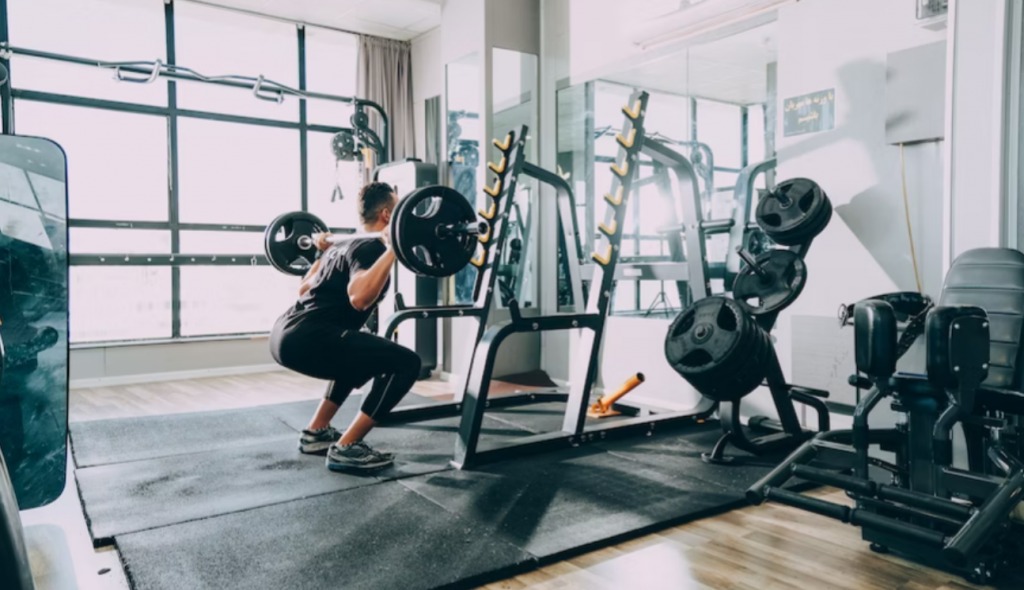
Strength Training 101: Essential Equipment and Exercises for Beginners
Introduction Welcome to Strength Training 101! Whether you’re looking to build muscle, burn fat, or improve your overall fitness, strength training is an essential part of any workout routine. In this article, we’ll dive into the world of strength training for beginners and explore the necessary equipment and exercises to get you started on your fitness journey.
Benefits of Strength Training for Beginners Before we jump into the equipment and exercises, let’s take a moment to understand why strength training is so crucial, especially for beginners. Strength training not only helps in building muscle and increasing bone density but also enhances overall strength and endurance. It aids in weight management, improves posture, and boosts self-confidence. Additionally, strength training can reduce the risk of injury in everyday activities and sports.
Essential Equipment for Strength Training To get the most out of your strength training routine, having the right equipment is essential. Here are some must-have items:
1. Free Weights Free weights like dumbbells and kettlebells are versatile and effective for building strength. They engage stabilizing muscles and offer a wide range of motion, making them ideal for beginners.
2. Resistance Bands Resistance bands are inexpensive, portable, and provide constant tension throughout the exercises. They are excellent for targeting specific muscle groups and accommodating different fitness levels.
3. Weight Machines Weight machines are user-friendly and great for beginners as they guide proper movement and reduce the risk of injury. They offer controlled resistance, making them suitable for building strength gradually.
Key Exercises for Beginners Now that we have the equipment, let’s explore some fundamental exercises that are perfect for beginners:
1. Squats Squats target the lower body, including the quadriceps, hamstrings, and glutes. They improve lower body strength and functional movements.
2. Deadlifts Deadlifts are a compound exercise that engages multiple muscle groups, including the back, glutes, and hamstrings. They improve overall strength and posture.
3. Bench Press The bench press primarily targets the chest, shoulders, and triceps. It’s a fundamental upper body exercise for building upper body strength.
4. Shoulder Press Shoulder presses target the deltoid muscles and help in building strong and defined shoulders.
5. Pull-ups Pull-ups are excellent for working the back, biceps, and shoulders. They also strengthen the core and improve grip strength.
6. Push-ups Push-ups are a classic bodyweight exercise that works the chest, triceps, and shoulders. They also engage the core for stability.
7. Lunges Lunges target the quadriceps, hamstrings, and glutes, while also challenging balance and stability.
8. Planks Planks are a core-strengthening exercise that also engages the shoulders, back, and glutes. They improve overall core stability.
Creating a Strength Training Routine for Beginners To ensure progress and avoid injury, follow these tips when creating your strength training routine:
1. Setting Goals Define clear and achievable goals that align with your fitness aspirations. This will help you stay motivated and focused.
2. Choosing the Right Weight Start with a weight that allows you to perform each exercise with proper form and complete the desired repetitions.
3. Warm-up and Cool-down Always warm up before starting your strength training session and cool down afterward to prevent injuries.
4. Balancing Different Muscle Groups Design a routine that targets different muscle groups equally to ensure balanced muscle development.

Common Mistakes to Avoid As a beginner, it’s common to make mistakes. Here are some errors to watch out for:
- Overtraining: Give your muscles ample time to recover to avoid burnout and injury.
- Poor Form: Always prioritize proper form over lifting heavy weights. Incorrect form can lead to injuries.
- Skipping Warm-up: Warming up prepares your body for intense exercises and reduces the risk of injury.
- Ignoring Rest Days: Rest is essential for muscle recovery and growth. Don’t neglect rest days.
Tips for Progression To keep progressing and challenging your muscles, consider the following tips:
- Gradually Increase Weight: Gradually increase the weight you lift to continue challenging your muscles.
- Change Repetitions and Sets: Alter the number of repetitions and sets to keep your workouts diverse.
- Incorporate New Exercises: Introduce new exercises to target different muscle groups and keep your routine fresh.
Staying Motivated Staying motivated is key to achieving your strength training goals. Here are some tips to stay on track:
- Track Your Progress: Keep a workout journal to track your achievements and progress over time.
- Find a Workout Buddy: Working out with a friend can be fun and motivating.
- Celebrate Achievements: Celebrate your milestones, no matter how small they may seem.
Conclusion Congratulations! You’ve now been introduced to the world of strength training for beginners. By incorporating essential equipment and performing key exercises, you’re well on your way to building a strong and healthy body. Remember to set clear goals, practice proper form, and stay motivated throughout your fitness journey.
FAQs
1. Is strength training suitable for beginners? Absolutely! Strength training is beneficial for individuals of all fitness levels, including beginners.
2. How many days a week should I do strength training? For beginners, two to three days of strength training per week is recommended to allow ample rest and recovery.
3. Can I do strength training at home without any equipment? Yes, bodyweight exercises like push-ups, squats, and lunges can be done at home without any equipment.
4. How long should a strength training session last? A typical strength training session for beginners can last around 30 to 45 minutes.
5. Will strength training make me bulky? No, strength training for beginners focuses on building lean muscle and enhancing overall strength without causing bulkiness.



